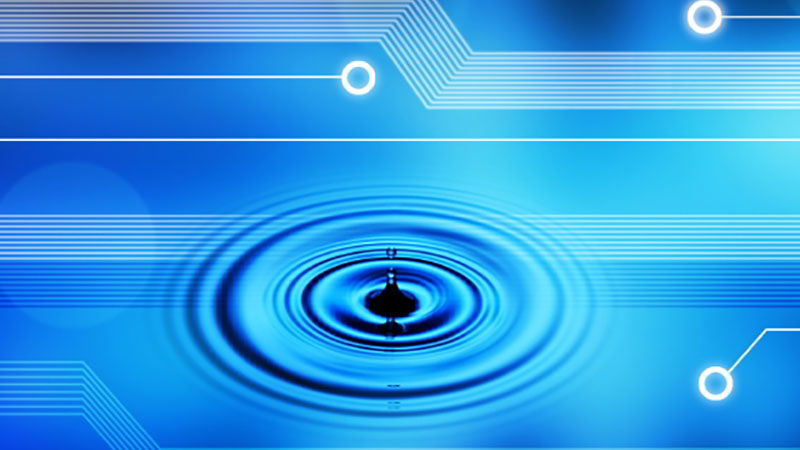
India continues to face severe water stress and a large population is yet to have safe drinking water facility. According to UN-Water Index, the situation is disturbing as compared to other countries in terms of access to safe water with over 100 million households in India still lacking access. The situation threatens to worsen further with India’s overall population expected to touch 1.5 billion by 2030, further increasing the pressure on the already strained water resources as the demand is projected to be twice the available supply, implying severe water scarcity for hundreds of millions of people and an eventual 6 percent loss in the country's GDP.
Digital Transformation today has become a necessity for every industry in the world - much as the internet, computerisation, and electrification were the transformational necessities earlier. Digital Transformation is also is subject to similar hesitancies as the earlier transformations. Even simple equipment for a water project requires the capture of as many as 15-20 data points in different formats and recording systems. To set up an entire plant we need to capture these data points for not just each piece of equipment but also for the movement of people, materials and maintenance required during operations. The interplay of all these forces thus exponentially multiplies the complexity. A problem in any one of the data points can create cascading issues and result in delays and losses.
When water utilities consider adopting new technologies, it’s important to know that digital solutions can offer immense benefits. Return on Investment (ROI) from digital adoption can be realized in many different ways. There are, however, other measurable that are equally valuable and can help utilities assess the success of a new technology deployment. Utilities that leverage all types of insights and data are more likely to build a forward-thinking culture that can address new and existing challenges more quickly.
Digital transformation is like a series of stepping stones: when a utility addresses a need, this lends itself to optimizing a secondary need — and so the utility continues delivering a better end result for the customer while creating efficiencies that optimize budgets. When a water utility has a successful implementation of a leak detection program, it provides early visibility to leaks as they form. This allows the utility to proactively plan pipe repairs and rehabilitation, which also helps to address issues of aging infrastructure and non-revenue water (NRW).
When a utility deploys an advanced metering infrastructure (AMI) system to help eliminate the costs associated with manual meter reading and streamline monthly billing, it also improves the overall intelligence of the water network with two-way communication. This enables meters to be remotely controlled and gives utilities near real-time visibility of the water system that can improve customer service. When a technology not only addresses your immediate pain point but addresses a secondary need or opens doors to further opportunities, this additional value should be recognized.
Automating a manual process to manage water quality, it also helps reducing the amount of NRW and can further improve water quality and safety. Moreover, automating a manual task means that no worker or tools are needed to perform the task. These resources are now freed up to go elsewhere and address other issues on the ever-growing to-do lists of water operators.
Today’s utilities are up against bigger challenges than ever before, which can be overwhelming at times. For the day-to-day management of processes, a proactive approach is more efficient than a reactive approach. A proactive approach gives utilities more time to focus on new issues — such as tightening regulations, depleting resources, or aging infrastructure. Freeing up personnel to address these challenges is vital.
Every water utility’s mission is to deliver safe drinking water to its customers, whether it is domestic or commercial. By connecting infrastructure to technology, this mission can be achieved more efficiently and sustainably. These technology investments are often questioned or rejected on the basis of ROI — but there are now countless technologies that help utilities provide safe drinking water while also providing real benefits.
The use of technology like sensors, automated control, analytics and remote monitoring to manage pressure in a water system optimizes the delivery of water pressure to customers when it is needed. In addition, optimal pressure can reduce leakage, which in turn reduces costs associated with NRW and can extend the life expectancy of water infrastructure and other assets. With more efficient use of funding, utilities can focus on what they do best — delivering safe, affordable drinking water.